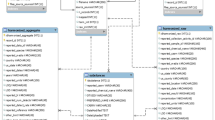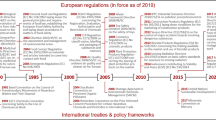Abstract
The ability to measure chemicals in humans (often termed biomonitoring) is far outpacing the ability to interpret reliably these data for public health purposes, creating a major knowledge gap. Until this gap is filled, the great promise of routinely using biomonitoring data to support decisions to protect public health cannot be realized. Research is needed to link biomonitoring data quantitatively to the potential for adverse health risks, either through association with health outcomes or using information on the concentration and duration of exposure, which can then be linked to health guidelines. Developing such linkages in the risk assessment paradigm is one of the primary goals of the International Council of Chemical Associations' (ICCA) Long-Range Research Initiative (LRI) program in the area of biomonitoring. Therefore, ICCA sponsored a workshop to facilitate development of a coordinated agenda for research to enable an improved interpretation of human biomonitoring data. Discussions addressed three main topics: (1) exploration of the link between exposure, dose, and human biomonitoring data, (2) the use of computational tools to interpret biomonitoring data, and (3) the relevance of human biomonitoring data to the design of toxicological studies. Several overarching themes emerged from the workshop: (a) Interpretation and use of biomonitoring data should involve collaboration across all sectors (i.e., industry, government, and academia) and countries. (b) Biomonitoring is not a stand-alone tool, and it should be linked to exposure and toxicological dose information. (c) Effective communication is critical, because when uncertainty about the actual risks is high, the perceived risks grow in the absence of communication. (d) The scope of future biomonitoring activities encompasses a variety of research approaches — from advancing the science to fill data gaps to advancing the accessibility of the current knowledge to enable better information sharing.
This is a preview of subscription content, access via your institution
Access options
Subscribe to this journal
Receive 6 print issues and online access
$259.00 per year
only $43.17 per issue
Buy this article
- Purchase on Springer Link
- Instant access to full article PDF
Prices may be subject to local taxes which are calculated during checkout
Similar content being viewed by others
Abbreviations
- ACC:
-
American Chemistry Council
- ADME:
-
absorption, distribution, metabolism, and elimination
- AUC:
-
area-under-the-curve
- CDC:
-
Centers for Disease Control and Prevention
- Cefic:
-
the European chemical industry council
- ECETOC:
-
European Centre for Ecotoxicology and Toxicology of Chemicals
- EPA:
-
US Environmental Protection Agency
- EU:
-
European Union
- ICCA:
-
International Council of Chemical Associations
- ILSI/HESI:
-
International Life Science Institute Health and Sciences Institute
- JCIA:
-
Japan Chemical Industries Association
- LRI:
-
Long-Range Research Initiative
- MOE:
-
margin of exposure
- NGO:
-
non-governmental organization
- NOAEL:
-
no observable adverse effects limit
- NRC:
-
National Research Council
- OECD:
-
Organisation for Economic Co-operation and Development
- PBPK:
-
physiologically based pharmacokinetic
- QSAR:
-
quantitative structure–activity relationships
- QSPR:
-
quantitative structure–property relationship
- RfD:
-
reference dose
References
European Centre for Ecotoxicology and Toxicology of Chemicals (ECETOC). Guidance for the Interpretation of Biomonitoring Data, 2005. Document number 44. November 30, 2005.
National Research Council (NRC). Human Biomonitoring for Environmental Chemicals. NRC Committee on Human Biomonitoring for Environmental Toxicants, 2006. July 2006.
Acknowledgements
We thank the entire Scientific Organizing Committee, including Rick Becker, American Chemistry Council; Ben Blount, Centers for Disease Control and Prevention; Laurent Bontoux, European Union Joint Research Centre; Peter Boogaard, Shell Health Services – Shell International BV; Akira Fukushima Lion Corporation, Japan; Annette Guiseppi-Elie, Dupont; Doug Haines, Health Canada; Masatoshi Kumamoto, Japan Chemical Industry Association; Marsha Morgan, US EPA; Moiz Mumtaz, Centers for Disease Control and Prevention; Larry Needham, Centers for Disease Control and Prevention; and Miles Okino, US EPA. This meeting report summarizes recommendations that were generated by the workshop participants. The views expressed do not necessarily represent positions of the participating organizations, nor do they represent an endorsement of any particular product or vendor.
Author information
Authors and Affiliations
Corresponding author
Rights and permissions
About this article
Cite this article
Bahadori, T., Phillips, R., Money, C. et al. Making sense of human biomonitoring data: Findings and recommendations of a workshop. J Expo Sci Environ Epidemiol 17, 308–313 (2007). https://doi.org/10.1038/sj.jes.7500581
Received:
Accepted:
Published:
Issue Date:
DOI: https://doi.org/10.1038/sj.jes.7500581
Keywords
This article is cited by
-
Scientific contestations over “toxic trespass”: health and regulatory implications of chemical biomonitoring
Journal of Environmental Studies and Sciences (2016)



